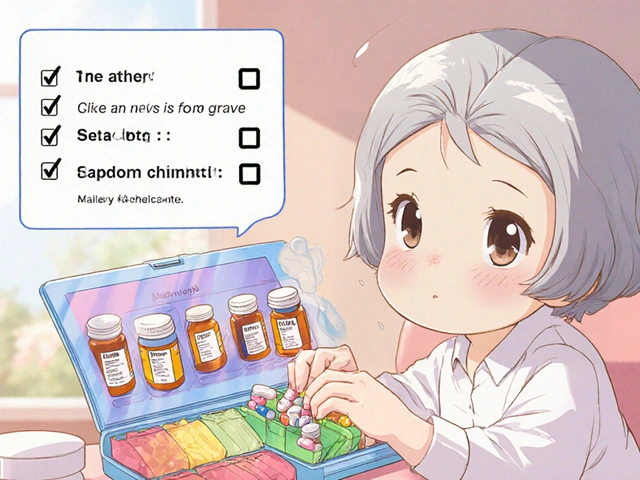Pregnancy Test Accuracy Calculator
Current Test Details
This calculator estimates the probability of a positive test result based on the time since conception and selected test type.
Estimated Test Result
Probability of a positive result
How It Works
This calculator estimates the probability of a positive pregnancy test result based on:
- Time since conception (days)
- Test sensitivity (different tests detect hCG at different levels)
Finding out if you’re expecting can feel like a roller‑coaster, and the right test can calm the ride. Below you’ll get a quick snapshot, then a step‑by‑step walk through the different tests, how reliable they are, and the best moments to use them.
- Three main test categories: urine strips, digital home kits, and clinical blood tests.
- Urine tests detect hCG about 10‑12days after conception; blood tests can pick it up a few days earlier.
- Accuracy climbs steeply after a missed period - 99%+ for most modern kits.
- Take a test first‑morning urine for the strongest hormone signal.
- Watch for false results caused by medication, fertility treatments, or early testing.
What the test is actually looking for
At the heart of every pregnancy test is a hormone called hCG (human chorionic gonadotropin). After a fertilized egg implants, the placenta starts releasing hCG into the bloodstream and later into urine. The amount doubles roughly every 48‑72hours, which is why timing matters.
The hormone’s rise follows a predictable pattern tied to the menstrual cycle (the monthly hormonal cycle that prepares the uterus for pregnancy). Knowing where you are in that cycle helps you choose the right test and interpret the result.
Types of pregnancy tests
Tests fall into three broad buckets. Each has its own sample, detection window, and user experience.
| Test Type | Sample | Earliest Detection | Typical Accuracy | Average Cost (UK) |
|---|---|---|---|---|
| Urine strip | Urine | 10‑12 days post‑conception | 97‑99% | £1‑£3 per strip |
| Digital home kit | Urine | 10‑12 days post‑conception | 98‑99% | £5‑£10 per kit |
| Blood test (quantitative) | Blood | 7‑9 days post‑conception | 99‑100% | £30‑£60 (clinic) |
| Early detection (sensitive) strip | Urine | 7‑9 days post‑conception | 95‑97% | £2‑£4 per strip |
All three share a core principle: a chemical reaction that changes colour or displays a digital read‑out when hCG reaches a threshold. The difference lies in how low that threshold is, which determines how early you can test.
How accurate are they?
Accuracy depends on two factors: the test’s sensitivity (the lowest hCG level it can detect) and when you use it. Most modern urine strips are labelled “≥25mIU/mL”. That means they’ll reliably turn positive when hCG hits 25mIU per millilitre, usually around the day of a missed period.
Blood tests, measured in the lab, can detect as little as 1‑2mIU/mL. That’s why they’re the choice for doctors when an early result is needed.
False negatives happen when you test too early, dilute urine with excess water, or use a test past its expiration date. False positives are rarer but can arise from recent fertility treatments, certain medications (e.g., hCG injections), or a medical condition called choriocarcinoma.
When is the best time to test?
Timing is a simple equation: later = higher accuracy. Here’s a quick guide:
- Missed period: This is the sweet spot for most over‑the‑counter kits. Wait at least one day after the expected start of your period.
- First‑morning urine: Overnight, your urine is most concentrated, giving the strongest hCG signal.
- Early‑symptom testing: If you notice spotting, breast tenderness, or fatigue before a missed period, use an early detection strip. Expect a higher chance of a false negative, so repeat after 48hours if negative.
- Blood test: Schedule with your GP or clinic if you need confirmation before a missed period, especially if you’re undergoing fertility treatment.

Step‑by‑step: Using a home urine test correctly
- Read the expiration date. Old chemicals lose sensitivity.
- Collect a mid‑stream urine sample in the cup that comes with the kit, or hold the test stick directly in the stream for a few seconds (follow the brand’s instructions).
- Place the test on a flat surface and start the timer. Most kits show results in 3‑5minutes.
- Interpret the result exactly as described: one line = negative, two lines = positive, or digital read‑out “Pregnant/Not Pregnant”.
- If the result is unclear (faint line, no change), wait 24‑48hours and test again.
Understanding the numbers: What hCG levels tell you
Quantitative blood tests give an exact hCG number. Typical ranges:
- <10mIU/mL - not pregnant.
- 10‑25mIU/mL - very early pregnancy or a false negative on a urine test.
- 25‑100mIU/mL - early pregnancy, usually detectable on a home kit after a missed period.
- >100mIU/mL - well into the first trimester; the hormone should be rising rapidly.
Doctors use the rate of increase (should double every 48‑72hours) to confirm a viable pregnancy and rule out ectopic pregnancies.
Common pitfalls and how to avoid them
- Testing too early: The hormone may be below the test’s threshold. Wait 48hours and retest.
- Drinking excess fluids: Diluted urine can mask hCG. Stick to the first‑morning sample.
- Expired kits: Chemical degradation reduces sensitivity. Replace old stock.
- Medications: Certain fertility drugs contain hCG and can cause false positives. Check your prescription.
- Reading after the advised time: Some tests develop a second line after the window, leading to misinterpretation.
Quick checklist before you test
- Know the date of your last menstrual period.
- Choose the appropriate test type for your timeline.
- Use first‑morning urine whenever possible.
- Verify the kit’s expiration date.
- Read instructions carefully and set a timer.
- Record the result and the date for future reference.
Frequently Asked Questions
Can a pregnancy test be accurate the day I miss my period?
Yes. Most over‑the‑counter urine tests have a detection threshold that reliably shows a positive result by the first day of a missed period, especially if you use first‑morning urine.
What’s the difference between a digital and a strip test?
A strip test shows lines that you interpret, while a digital test displays words like “Pregnant” or “Not Pregnant”. Accuracy is similar; the choice comes down to personal preference and ease of reading.
Why might I get a negative result and then a positive a day later?
hCG levels double roughly every two days. If you test just before the hormone hits the test’s detection limit, a negative is possible. Waiting 24‑48hours allows the hormone to rise enough for a positive.
Can certain medicines cause a false positive?
Yes. Medications that contain hCG, such as some fertility treatments, can trigger a positive result even if you’re not pregnant. Always inform your doctor about any hormonal medication.
Is a blood test necessary if I get a positive home test?
A home positive is usually reliable, but a blood test can confirm the pregnancy, provide exact hCG levels, and help monitor early development, especially if you have risk factors or symptoms of ectopic pregnancy.







Raghav Suri
October 3, 2025 AT 08:50If you’re tracking cycles, note that hCG usually isn’t detectable until about day 10‑12 post‑conception, so testing before that is a gamble. Early‑detection strips push the window a few days earlier, but they still need enough hormone to trigger the reaction. Using first‑morning urine gives you the most concentrated sample, which can be the difference between a faint line and a clear positive. And remember, any test past its expiration date loses sensitivity, so toss old kits.
Freddy Torres
October 3, 2025 AT 09:08Spot on, Raghav – the hormone’s timing is the real game‑changer. Grab a fresh strip and let nature do its thing.
Andrew McKinnon
October 3, 2025 AT 09:26Honestly, if you’re still chasing that faint line at day 8, you’re just flirting with false‑negatives. The jargon‑filled labs can sniff hCG at 1 mIU/mL, which is why they’re the gold standard. Stick to the guide’s timing and you’ll avoid that cringe‑worthy retest loop.
Dean Gill
October 3, 2025 AT 09:45Let’s break down why this guide matters beyond the bullet points. First, understanding the biology of hCG helps demystify why a missed period feels like a ticking clock – the hormone doubles roughly every 48‑72 hours, creating that exponential curve we all hear about. Second, the distinction between urine strips, digital kits, and quantitative blood tests isn’t just marketing fluff; each has a different detection threshold, which directly translates to how early you can test with confidence. Third, the guide wisely emphasizes first‑morning urine, because overnight concentration reduces dilution, giving the test the strongest signal possible. Fourth, false positives, though rare, can arise from fertility medications or certain medical conditions – a nuance often omitted from over‑the‑counter packaging. Fifth, the timing recommendation to wait at least one day after a missed period isn’t arbitrary; it aligns with the average rise of hCG to the 25 mIU/mL level that most kits are calibrated for. Sixth, the guide’s checklist reminds you to record dates and results, a simple habit that becomes invaluable if you need to discuss hCG trends with a provider. Seventh, the inclusion of an early‑detection strip option acknowledges that some people experience symptoms before a missed period and need a tool that pushes the detection window a few days earlier. Eighth, the comparative table of costs and accuracies gives a quick reference, preventing the costly mistake of splurging on a premium kit when a standard strip would suffice. Ninth, the step‑by‑step instructions on sample collection eliminate the common error of over‑filling the cup, which can lead to overflow and inaccurate readings. Tenth, the reminder about expiration dates isn’t just a safety tip; the chemical reagents degrade over time, reducing sensitivity and increasing false‑negative risk. Eleventh, the guide’s advice to wait 24‑48 hours before retesting after a negative respects the hormone’s doubling rate, preventing premature panic. Twelfth, the note on diluted urine from excessive fluid intake highlights a lifestyle factor that many overlook. Thirteenth, the explanation of hCG quantitative levels, like the 100 mIU/mL benchmark for early first‑trimester, equips readers to interpret lab results beyond a simple positive/negative. Fourteenth, discussing ectopic pregnancy detection through hCG trends underscores the clinical importance of monitoring rather than just confirming pregnancy. Fifteenth, the overall tone of the guide balances scientific rigor with practical tips, making it accessible for both newcomers and seasoned trackers. In short, this guide isn’t just a list; it’s a roadmap that respects the biology, the psychology, and the practicalities of early pregnancy detection.
Royberto Spencer
October 3, 2025 AT 10:03While the data is solid, one must consider the ethical dimension of early detection. Pushing the timeline to day 7 can pressure individuals into decisions before they’ve fully processed the news. Moreover, the guide’s emphasis on self‑monitoring, though empowering, may inadvertently sideline professional medical advice in nuanced cases.
Annette van Dijk-Leek
October 3, 2025 AT 10:21Great reminder about expiration dates!!!
Katherine M
October 3, 2025 AT 10:40Indeed, respecting the biochemical thresholds is crucial 😊. The guide’s layout, with clear headings and concise bullet points, facilitates quick reference for users under stress. I applaud the inclusion of both digital and quantitative options, catering to varied preferences.
Bernard Leach
October 3, 2025 AT 10:58The point about first‑morning urine is often missed by many; concentrating the sample can boost detection odds dramatically. Also, remember that temperature and humidity can affect strip chemistry, so store kits in a cool, dry place. Lastly, if you ever get a ambiguous line, the guide’s advice to wait 48 hours before retesting aligns with the hormone’s natural doubling curve.
Shelby Larson
October 3, 2025 AT 11:16Your guide is solid but please double‑check the spelling of "hCG" – it's case‑sensitive. Also, the statement about "blood tests can detect as low as 1‑2 mIU/mL" should cite a reputable source. Lastly, avoid saying "the test is 99‑100% accurate" without qualifying that user error can affect outcomes.
Mark Eaton
October 3, 2025 AT 11:35Love the practical checklist – it turns a stressful moment into a manageable routine.
Alfred Benton
October 3, 2025 AT 11:53One should be wary of the pharmaceutical industry’s push for early‑detection kits; they profit from anxiety. Independent labs often provide more transparent results than over‑the‑counter brands. Always cross‑verify with a clinician if you have concerns.
allen doroteo
October 3, 2025 AT 12:11Well, that's the usual hype about "early" tests – don't buy the bull.
Corey Jost
October 3, 2025 AT 12:30Contrary to popular belief, rushing to test before a missed period rarely yields a reliable result; the hormonal ramp-up isn't linear, so early negatives are practically guaranteed. Moreover, the psychological toll of false hopes or needless panic can be significant, especially when social media amplifies anecdotes. The guide’s recommendation to wait until at least day 10‑12 is, therefore, not just scientific but humane. It also respects the natural variability among individuals – some may have slower hCG rise due to implantation timing. Finally, integrating a professional follow‑up after the first positive ensures that any underlying issues, like ectopic pregnancies, are caught early.
Nick Ward
October 3, 2025 AT 12:48Nice summary! 😊 The step‑by‑step reminds me of my first test experience.
felix rochas
October 3, 2025 AT 13:06One must note: some kits are deliberately calibrated to miss very early hCG levels – a marketing ploy!; always read the sensitivity specs!!!
Kylie Holmes
October 3, 2025 AT 13:25Super helpful! Can't wait to share this with friends who are trying to conceive.